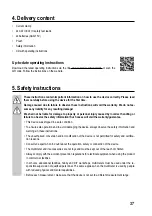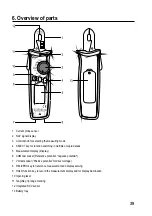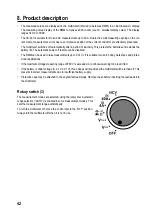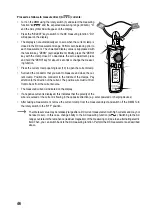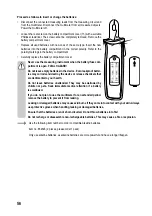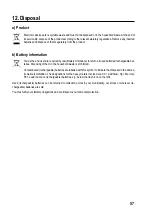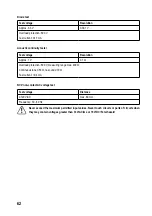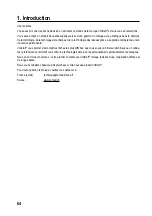
50
f) Continuity test
Make sure that all objects to be measured including circuit components, circuits and component
parts are disconnected and discharged.
• Switch on the DMM and select the
mode. The display shows the
symbol “Ω” for resistance measurement. Press the “SELECT” key once.
The display shows the symbol “
” for continuity test and the unit
“Ohm”. Press the key again to switch to the next measuring mode.
• Insert the red test lead into the V test socket (7), the black test lead into
the COM test socket (6).
• As continuity, a measured value of approximately ≤50 Ohm is detected
and a beep sounds. The continuity test measures resistances of up to
400 Ohm.
• “OL” (overload) indicates that the measuring range has been exceeded
or that the circuit is broken.
• After measuring, remove the test leads from the measured object and
turn the multimeter off.
g) Diode test
Make sure that all objects to be measured including circuit components, circuits and component
parts are disconnected and discharged.
• Switch on the DMM and select the
mode. The display shows
the symbol “Ω” for resistance measurement. Press the “SELECT” key
twice. The display shows the symbol
for the diode test and the unit
“V”. Press the key again to switch to the next measuring mode.
• Insert the red test lead into the V test socket (7), the black test lead into
the COM test socket (6).
• Check the measuring leads for continuity by connecting both measuring
probes to one another. A value of approx. 0.000 V should be shown.
• Connect the measuring probes to the object that you want to measure
(diode).
• The continuity voltage (“UF”) will be shown in Volts (V). “OL” indicates
that the diode is reverse-biased or defective. Try taking the measure-
ment again in the opposite polarity.
• After measuring, remove the test leads from the measured object and
turn the multimeter off.


